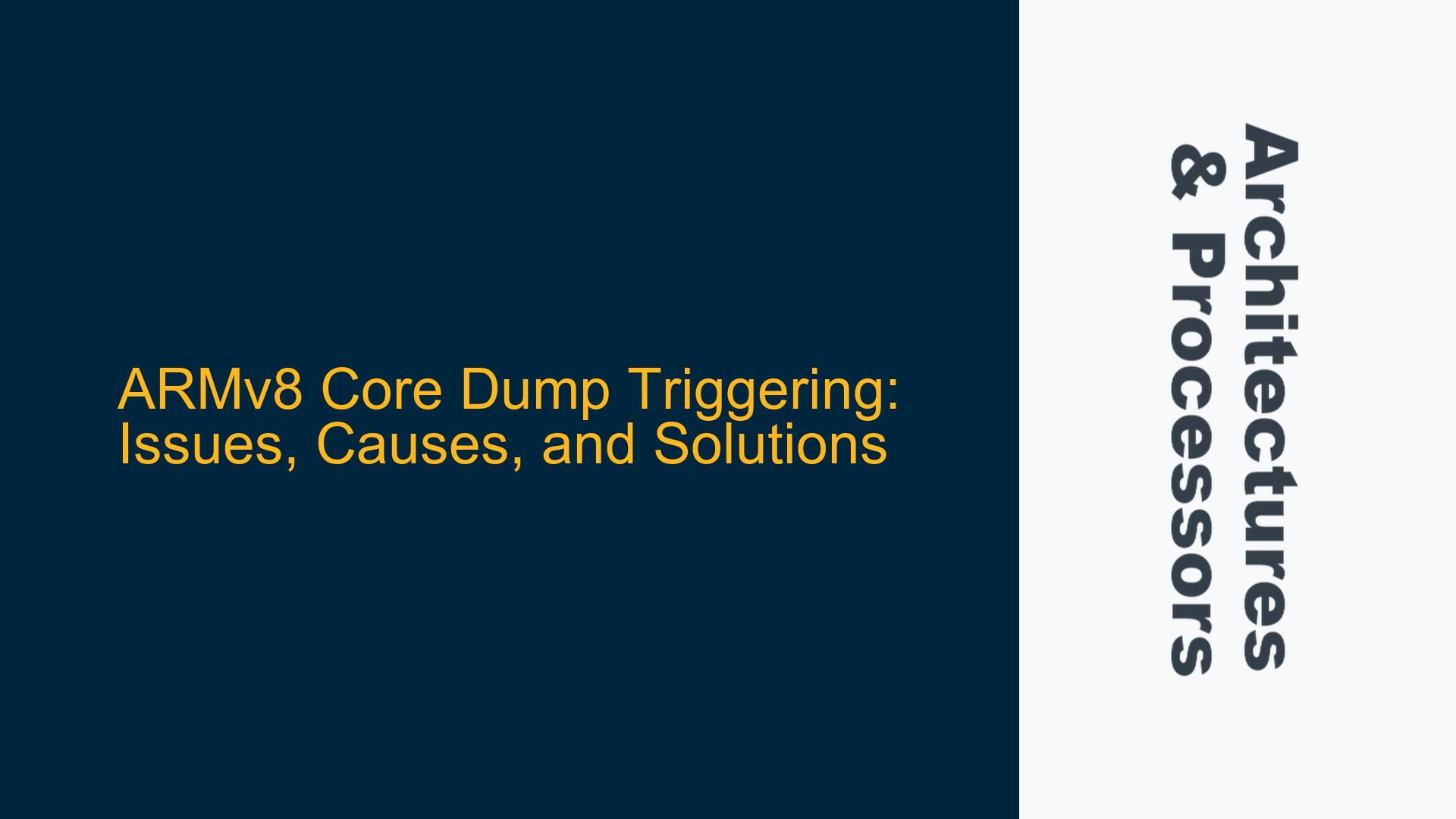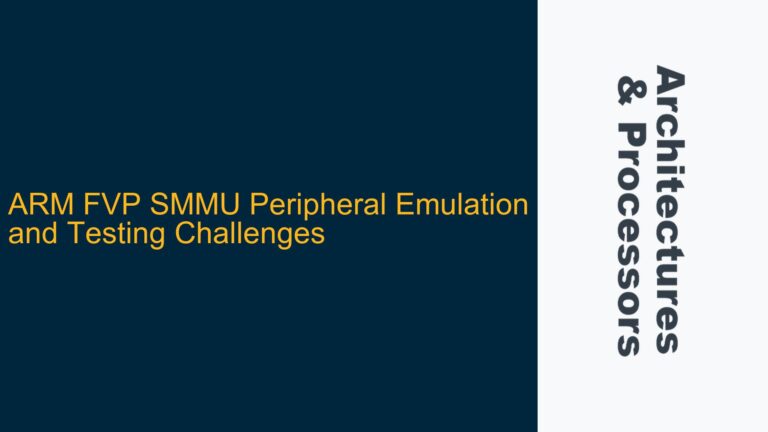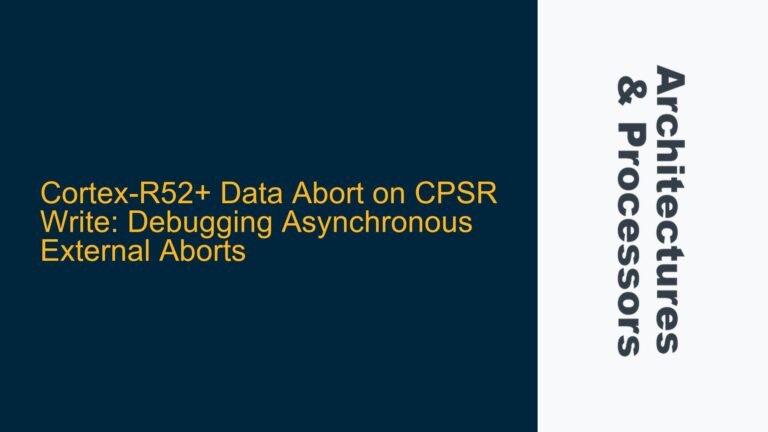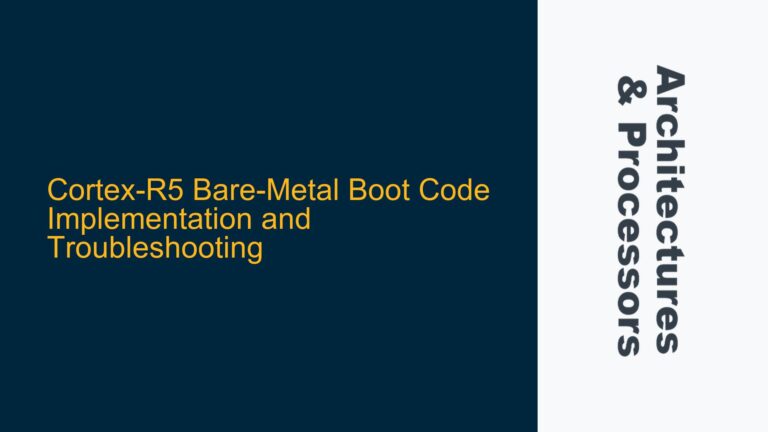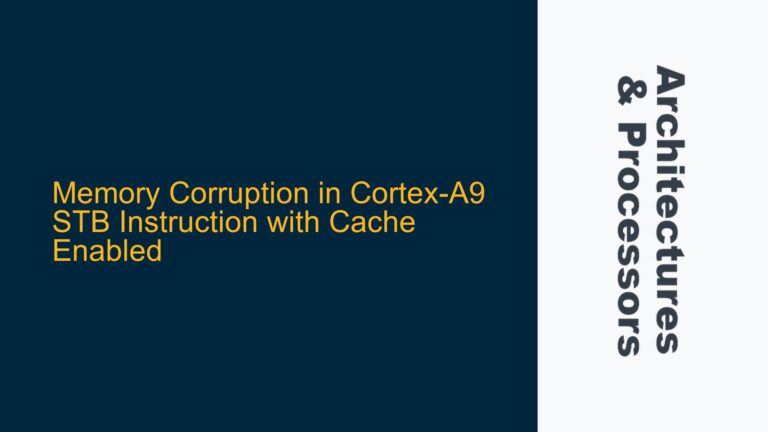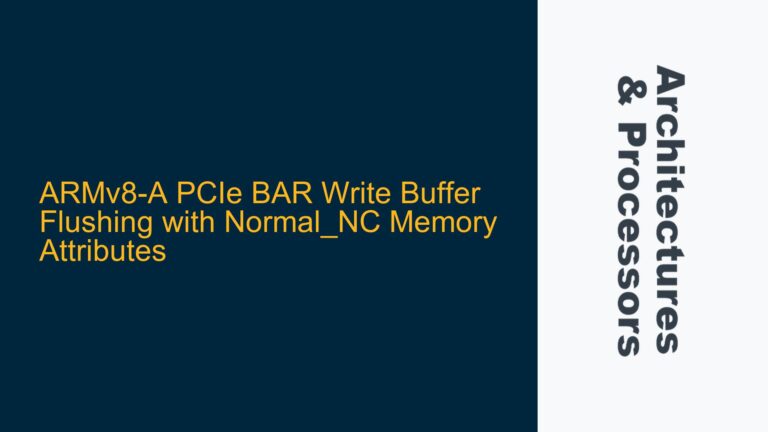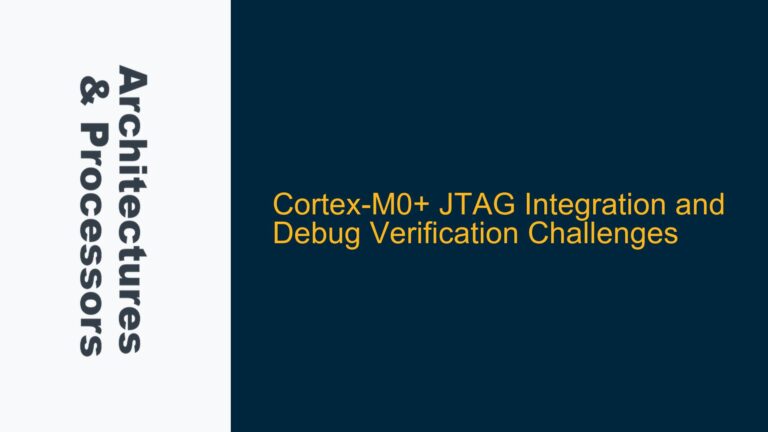ARMv8 Core Dump Triggering via Illegal Vector Table Fetch and PSTATE Manipulation
The process of triggering a core dump in ARMv8 architectures can be a critical debugging tool, especially when diagnosing complex system failures or unexpected behavior. However, the methods employed to force a core dump, such as manipulating the PSTATE flags or instigating an illegal vector table fetch, can sometimes lead to inconsistent results. These inconsistencies manifest as either an immediate core dump or a system hang, which can trigger secondary mechanisms like hard lockup detectors. Understanding the root causes of these inconsistencies and implementing reliable solutions is essential for effective debugging and system analysis.
The core issue revolves around the use of ARMv8 instructions to force a core dump. Specifically, the methods involve setting the PSTATE flags via the MSR DAIFClr instruction and relocating the vector table to an illegal address to trigger an invalid vector fetch. While these methods can work, they are not always reliable, leading to system hangs or delayed core dumps. This inconsistency can be attributed to several factors, including the timing of cache invalidation, the state of the processor when the illegal fetch is attempted, and the interaction between the core and the memory subsystem.
Memory Subsystem Timing and Cache Coherency Issues During Illegal Vector Fetch
One of the primary causes of the inconsistent core dump behavior is the timing of memory subsystem operations, particularly cache coherency and invalidation. When the vector table is relocated to an illegal address, the processor must fetch the new vector table from memory. However, if the cache is not properly invalidated or if the memory subsystem is not synchronized, the processor may attempt to fetch stale or incorrect data, leading to a system hang instead of a core dump.
The DSB SYNC instruction is used to ensure that all memory operations are completed before proceeding, but its effectiveness can be limited by the state of the cache and the memory subsystem. If the cache is not invalidated before the illegal fetch is attempted, the processor may still access stale data, leading to unpredictable behavior. Additionally, the timing of the cache invalidation and the subsequent fetch can be affected by the state of the processor, particularly if other cores are still active or if interrupts are not properly disabled.
Another factor contributing to the inconsistent behavior is the state of the PSTATE flags when the illegal fetch is attempted. The MSR DAIFClr instruction is used to clear the DAIF (Debug, SError, IRQ, and FIQ) bits in the PSTATE register, effectively enabling interrupts. However, if interrupts are not properly managed, they can interfere with the illegal fetch operation, leading to a system hang or delayed core dump. The interaction between the PSTATE flags, the interrupt controller, and the memory subsystem can create complex timing issues that are difficult to predict and control.
Implementing Reliable Core Dump Mechanisms with Synchronization and Cache Management
To address the issues of inconsistent core dump behavior, it is essential to implement a more reliable mechanism that ensures proper synchronization and cache management. The following steps outline a detailed approach to achieving a consistent and immediate core dump in ARMv8 architectures:
Step 1: Disable Interrupts and Ensure Proper PSTATE Configuration
Before attempting to trigger a core dump, it is crucial to disable all interrupts and ensure that the PSTATE flags are properly configured. This can be achieved by setting the DAIF bits using the MSR DAIFSet instruction, which disables Debug, SError, IRQ, and FIQ interrupts. This step ensures that no external interrupts can interfere with the core dump process, reducing the likelihood of a system hang.
Step 2: Invalidate the Cache and Ensure Memory Synchronization
To prevent the processor from accessing stale data during the illegal vector fetch, it is necessary to invalidate the cache and ensure that all memory operations are synchronized. This can be achieved using a combination of cache invalidation instructions and memory barrier instructions. The DC IVAC instruction can be used to invalidate the cache line corresponding to the illegal vector table address, while the DSB SYNC instruction ensures that all memory operations are completed before proceeding.
Step 3: Relocate the Vector Table to an Illegal Address
Once the cache is invalidated and memory operations are synchronized, the vector table can be relocated to an illegal address. This is done by writing the illegal address to the Vector Table Base Address Register (VTBR). The following assembly code demonstrates this process:
ldr x3, =0xE000ED00 // Load the address of the VTBR
mov x2, #0x1000000 // Load the illegal address
str x2, [x3, #8] // Write the illegal address to the VTBR
Step 4: Trigger an Exception to Force the Illegal Vector Fetch
With the vector table relocated to an illegal address, an exception can be triggered to force the processor to fetch the illegal vector. This can be done by generating a software-triggered exception, such as a PendSV or SVC exception. The following assembly code demonstrates how to trigger a PendSV exception:
ldr x3, =0xE000ED00 // Load the address of the Interrupt Control and State Register (ICSR)
mov x2, #0x10000000 // Set the PendSV bit
str x2, [x3, #4] // Write to the ICSR to trigger the PendSV exception
isb // Instruction Synchronization Barrier
dsb sy // Data Synchronization Barrier
Step 5: Monitor the System for Core Dump Completion
After triggering the exception, it is important to monitor the system to ensure that the core dump is completed successfully. This can be done by checking the system logs or using a debugger to verify that the core dump has been generated. If the system hangs or the core dump is delayed, additional debugging may be required to identify and resolve any remaining issues.
Step 6: Implement Fallback Mechanisms for Unreliable Scenarios
In cases where the core dump mechanism still fails to produce consistent results, it may be necessary to implement fallback mechanisms. These mechanisms can include additional checks and balances, such as verifying the state of the cache and memory subsystem before triggering the illegal fetch, or using alternative methods to force a core dump, such as generating a hardware fault or using a watchdog timer to trigger a system reset.
By following these steps, it is possible to implement a more reliable core dump mechanism in ARMv8 architectures. Proper synchronization, cache management, and interrupt handling are key to ensuring consistent and immediate core dumps, even in complex systems with multiple cores and high levels of concurrency.
Summary of Key Considerations and Best Practices
To summarize, the following table outlines the key considerations and best practices for implementing a reliable core dump mechanism in ARMv8 architectures:
| Consideration | Best Practice |
|---|---|
| Interrupt Management | Disable all interrupts using MSR DAIFSet before triggering the core dump. |
| Cache Invalidation | Invalidate the cache using DC IVAC and ensure synchronization with DSB SYNC. |
| Vector Table Relocation | Relocate the vector table to an illegal address using the VTBR. |
| Exception Triggering | Trigger a software exception (e.g., PendSV or SVC) to force the illegal fetch. |
| System Monitoring | Monitor the system to verify successful core dump completion. |
| Fallback Mechanisms | Implement additional checks or alternative methods for unreliable scenarios. |
By adhering to these best practices, developers can ensure that their core dump mechanisms are robust, reliable, and effective, even in the most challenging debugging scenarios.
